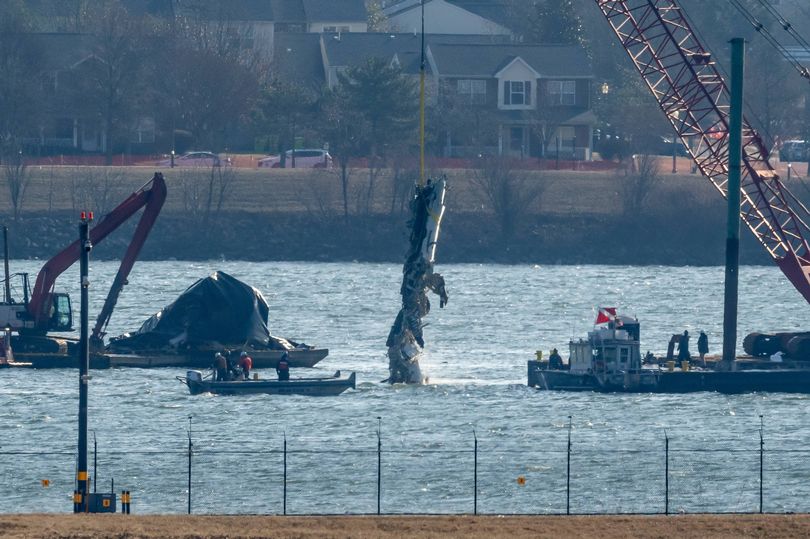
Understanding the Midair Collision
Investigators examining the midair collision between a passenger plane and an Army helicopter over Washington D.C. in January, which resulted in 67 fatalities, discovered that the helicopter was flying at a higher altitude than permitted and its altitude readings were incorrect. These details emerged during the first day of National Transportation Safety Board (NTSB) hearings in Washington D.C., where investigators are seeking to understand what caused the crash between the American Airlines plane from Wichita, Kansas, and the Black Hawk helicopter over Ronald Reagan National Airport.
The board initiated the three-day hearing by presenting an animation and playing audio and video from the night of the collision, as well as interrogating witnesses and investigators about how the Federal Aviation Administration (FAA) and the Army might have contributed to the nation's deadliest plane crash since November 2001.
The Flight Path and Altitude Issues
During the hearing, it became evident just how narrow the margin of error was for helicopters navigating the route the Black Hawk took on the night of the crash. This incident in January was the first in a series of crashes and near misses this year that have raised concerns among officials and the traveling public, despite statistics still indicating that flying is the safest mode of transportation.
The hearing kicked off with a video animation illustrating the positions of the helicopter and airliner leading up to the collision. The animation demonstrated how the helicopter exceeded the 200 feet (61 meters) altitude limit on the helicopter route along the Potomac River before colliding with the plane.
Altitude Discrepancies and Testing
Investigations revealed that the flight data recorder indicated the helicopter was actually 80 feet to 100 feet (24 to 30 meters) higher than what the barometric altimeter, which the pilots relied on, showed they were flying. As a result, the NTSB conducted tests on three other helicopters from the same unit over the same area and discovered similar discrepancies in their altimeters.
Dan Cooper from Sikorsky helicopters explained that the Black Hawk helicopter involved in the crash was designed in the 1970s using a type of altimeter that was standard at the time. Modern helicopters are equipped with air data computers, which didn't exist back then, that provide more accurate altitude readings.
Communication Challenges and Flight Paths
The NTSB tested Black Hawk helicopters from the same unit and found that their barometric altimeters were 80 feet to 130 feet lower than the altitude readings from a radio altimeter. A barometric altimeter uses atmospheric pressure to determine altitude, with pressure decreasing as altitudes increase. Radio altimeters, on the other hand, bounce radio waves off of the ground or the surface of water to determine altitude.
Military officials explained that a 70 to 100 foot (21 to 30 meters) variance between the Black Hawk's altimeters falls within acceptable parameters since aviators are expected to maintain their elevation plus or minus 100 feet. However, the bigger worry centers on FAA-approved flight paths around Reagan airport that feature such narrow spacing between helicopters and aircraft during landing operations.
Concerns Over Air Traffic Control
Transportation Secretary Sean Duffy hinted at negligence. Chief Warrant Officer David Van Vetchen revealed that following the crash, he spoke with numerous fellow pilots who all shared the identical belief that controllers would never authorize them to cross the runway approach path that the American aircraft was using before the disaster.
In the two minutes preceding the collision, a single air traffic controller was managing airport operations and helicopter movements in the vicinity, a responsibility that required communicating with or receiving transmissions from multiple different aircraft. The air traffic controller had communicated with or received transmissions from the Black Hawk helicopter, a departing airplane, an Air Force helicopter, a grounded airplane, a medical helicopter and an arriving flight that was not the American Airlines aircraft that would ultimately crash.
Night Vision Goggles and Communication Issues
Officials on Wednesday also highlighted the helicopter crew's use of night vision goggles, which restrict the user's visual range, as a contributing element. The animation concluded with surveillance footage depicting the helicopter striking the aircraft in a blazing collision.
Investigations have already revealed the FAA's failure to acknowledge a concerning pattern of 85 close calls at Ronald Reagan National Airport in the years preceding the crash, and that the Army's helicopters regularly operated around the nation's capital with crucial tracking technology, called ADS-B Out, switched off.
Legislative Response and Future Measures
U.S. Sen. Ted Cruz, a Republican, has put forward a bill on Tuesday that would mandate all aircraft operators to implement both types of ADS-B, or Automatic Dependent Surveillance Broadcast, which is essential for broadcasting an aircraft's location to other planes and air traffic controllers. Currently, most aircraft are fitted with ADS-B Out technology, but this legislation would compel airlines to install the more advanced ADS-B In systems in their fleets.
The proposed law would also eliminate a waiver that allows Department of Defense aircraft to bypass ADS-B transmission requirements. NTSB Chair Jennifer Homendy stated that her agency has been advocating for this change for years following numerous crashes. Transportation Secretary Sean Duffy expressed his support for the bill, indicating he'd like to see "a few tweaks," but overall believes it's "the right approach." He also hinted at negligence by the previous administration, citing a series of close calls in the skies near Washington, D.C.
